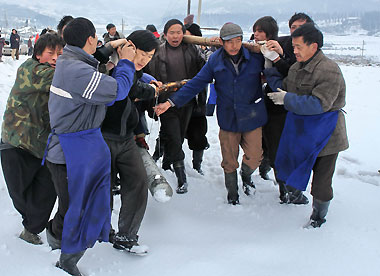Chinese meteorologists warn of sandstorms, spring drought
Updated: 2008-02-20 19:10
BEIJING - The China Meteorological Administration (CMA) said on Wednesday that the country's northern regions were likely to experience more frequent and severe sandstorms in spring, while eastern regions would receive less rain than last year.
"Sandstorm days" were forecast to increase significantly in eastern Inner Mongolia and northern Heibei, with a rising possibility of severe occurrences.
Eastern regions could expect less rain. Some areas, especially parts of Jilin and Liaoning provinces, were prone to "relatively severe" drought in the spring. As a result, local forest management officials should raise the forest fire alarm level, said the CMA.
Meteorologists said that the adverse forecasts were related to the La Nina phenomenon and abnormal atmospheric circulation and would prevail until summer.
La Nina is a large pool of unusually cold water in the equatorial Pacific that develops every few years and influences global weather. It is the climatic opposite of El Nino, which is a warming of the Pacific.
 Workers try to restore power lines damaged by snowstorm in Zhaotong, southwest Yunnan Province on February 20, 2008 [Xinhua] |
The latest development of La Nina conditions was the cause of rare prolonged snowstorms and low temperatures that resulted in havoc in many parts of China during the past month, said experts.
Snow storms that hit 21 provincial-level areas in southern and central China, the worst in 50 years, killed 107 people and forced 1.5 million people to relocate over about one month. They also caused losses of 111.1 billion yuan (US$about 15.3 billion), according to the Ministry of Civil Affairs.
"Losses caused by severe weather would keep rising if we cannot improve the weak points of weather forecasting," said Jiao Meiyan, the director of the National Meteorological Center.
She said that the forecast service should help prevent weather-related disasters. For example, the weather forecasters did predict heavy snow in many parts of China -- but they didn't anticipate how long the snow would last and how much would fall, or its impact on traffic and power supplies.
Meanwhile, she urged the authorities to step up the dissemination of weather information and raise public disaster-prevention awareness.
She suggested that power supply, traffic and construction departments should cooperate with weather officials to carry out feasibility studies on outdoor facilities to make sure they can survive harsh weather.
|
|
|
||
|
||
|
|
|
|